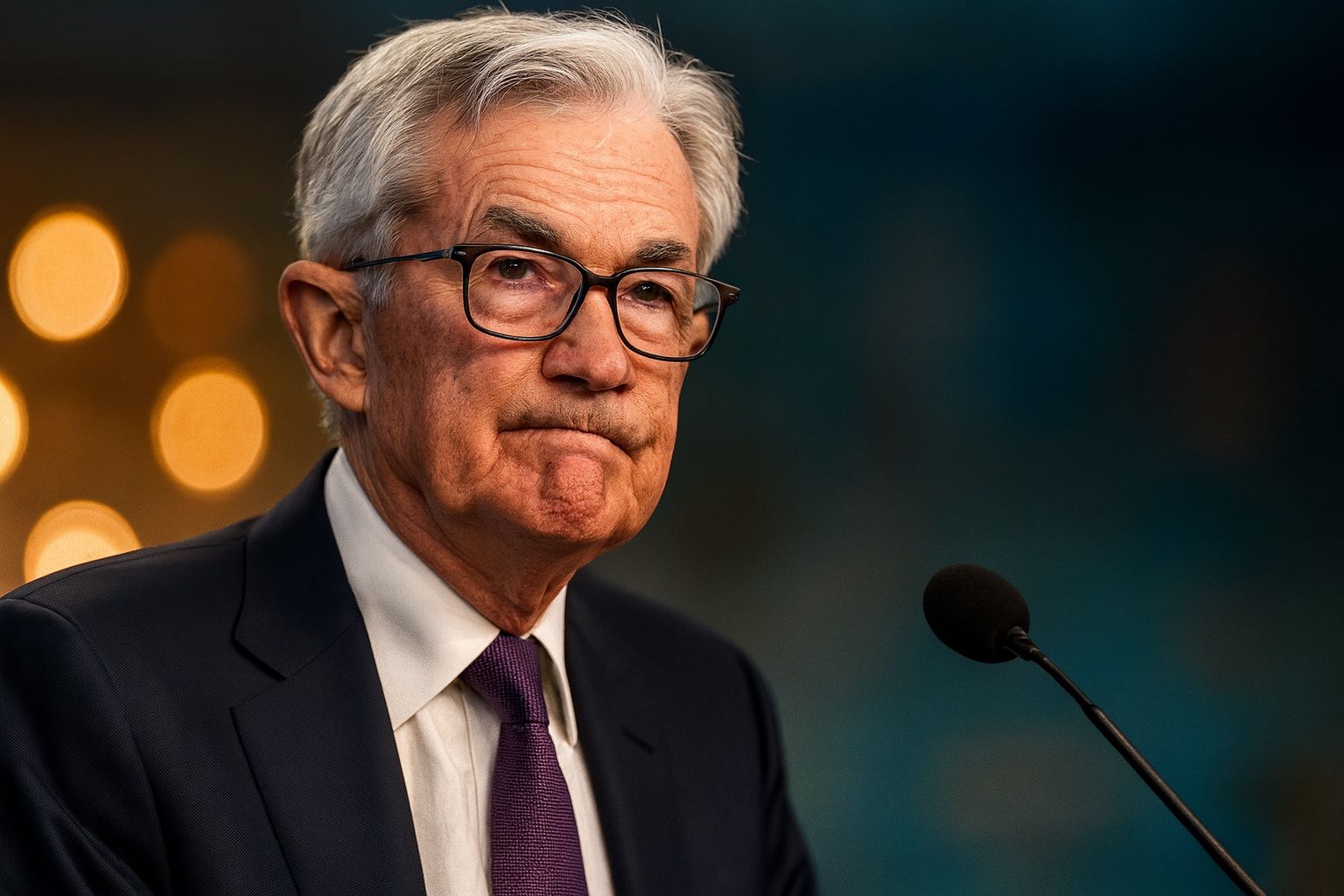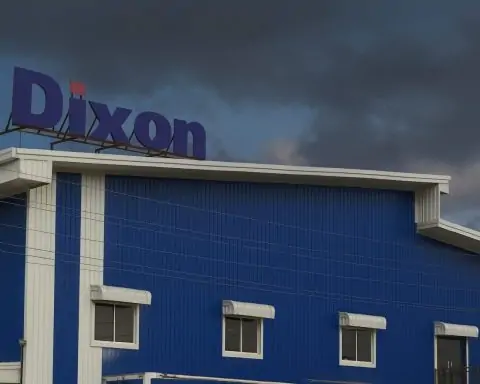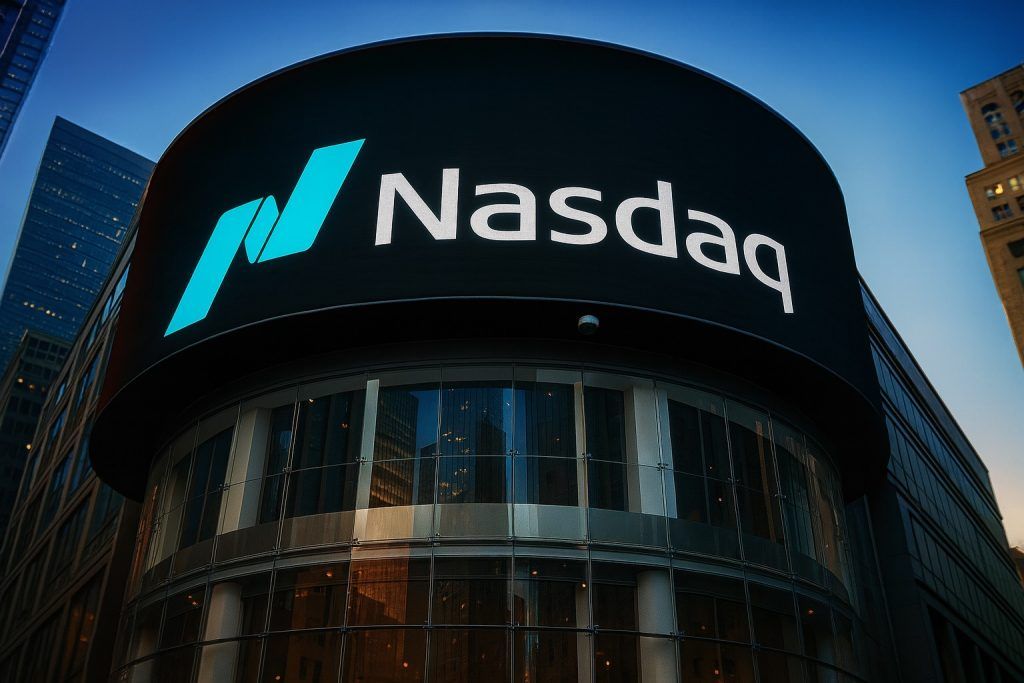- Federal Reserve focus: Fed Chair Jerome Powell gave his last major speech before the Oct. 28–29 policy meeting, noting “stronger-than-expected growth” (~4% Q3 GDP) and a jump in productivity, but warned that firms are still grappling with new tariffs and immigration limits that could lift both inflation and unemployment [1]. He faces a “tangled” economy with conflicting forces – trade shocks vs. an AI-led boom – forcing “something’s got to give,” as Fed Governor Chris Waller put it [2] [3].
- Monetary policy: After cutting rates 0.25% in September to a 4.00–4.25% range, markets now price in two more quarter-point cuts by year-end. Fed officials are split: some worry inflation (well above 2%) will stay elevated without restraint, while others warn the job market is cooling and needs support [4] [5]. Philadelphia Fed chief Anna Paulson says policy should move to a “neutral stance” to balance jobs vs. prices [6], whereas Governor Waller stresses caution to avoid a mistake.
- Economic data: Official data are scarce due to the U.S. government shutdown (Sept. jobs report was delayed) [7]. Private indicators are mixed: Atlanta Fed models showed ~4% GDP growth in Q3, yet ADP reported September job losses. Unemployment remains near 4.3% [8], close to full employment, but many private surveys suggest hiring has softened. This gap – booming output vs. sagging payrolls – exemplifies the Fed’s dilemma [9].
- Inflation outlook: Core inflation is moderating but still above target. Forecasters (NABE) see PCE inflation around 2.5% through next year [10]. However, Harvard economist Karen Dynan warns that tariff-driven costs could push it toward 3.3% by 2026, risking unmoored inflation expectations [11]. Goldman Sachs and others caution that cutting rates too quickly could be premature if inflation doesn’t fall.
- Markets: U.S. stocks have surged – the S&P 500 reached new all-time highs (~6,754 on Oct. 8) and the Nasdaq topped ~23,043 [12], up ~15–18% YTD on tech/AI euphoria. Last Monday (Oct. 13) the S&P rose +1.56% to 6,654.72 and Nasdaq +2.21% (22,694.61) [13], led by chipmakers like Broadcom. But on Oct. 14 futures plunged ~1% amid fresh trade tensions [14]. Safe havens rallied – gold spiked above $4,000/oz (a record high) [15] and 10-year Treasury yields dipped near 4.02% [16] as traders bet on Fed cuts.
- Global risks: Trade wars and shutdowns are roiling sentiment. President Trump announced 100% tariffs on all Chinese imports (plus new export controls) effective Nov. 1, rattling markets [17]. That news sent the S&P down ~2% on Oct. 10 [18] as investors warned the move could fuel U.S. inflation and slow global growth. Analysts like Craig Singleton say Trump’s tweets “could mark the beginning of the end of the tariff truce,” with spiraling US–China conflict adding to inflationary pressure [19]. Meanwhile, the DC shutdown leaves the Fed “flying blind” on key data [20] [21].
- Expert views & forecasts: Wall Street strategists are split. Some sound caution – Bank of England warned U.S. tech/AI stocks look “excessively high” and vulnerable to a “sudden correction” (pavlov’s dot-com boom analogy) [22]. Others are bullish: Wharton’s Jeremy Siegel argues that as long as inflation keeps cooling, the Fed can “gently lower rates and extend the expansion.” Pro-Stock forecasts are lofty – Goldman Sachs now sees the S&P ~6,800 by year-end and RBC projects ~7,100 by 2026 [23]. Overall, most analysts expect two more 0.25% cuts by Dec. and anticipate moderate growth to continue, provided inflation stays tame [24] [25].
Fed’s Balancing Act: Growth vs. Inflation
In his remarks, Powell emphasized the unusual mix of a robust economy (above-trend GDP growth and surging productivity) alongside persistent inflationary pressures. Federal Reserve economists now face “a duel” of forces – big fiscal and trade shock versus a tech/AI-driven boom – as EY’s Gregory Daco puts it [26]. Fed Governor Christopher Waller bluntly noted the contradiction: “You can’t have negative job growth and 4% GDP growth” [27]. In other words, either hiring must rebound to match output, or growth will slow. This tension has shaped policy: the Fed’s Sept. rate cut was portrayed as a way to support jobs without abandoning inflation goals [28]. Many officials now focus on employment risks; as Philadelphia Fed President Anna Paulson said, policy should aim for neutrality to balance these risks [29]. But they’re wary of doing too much too fast, especially if inflation rebounds.
Employment and Shutdown Data
U.S. employment data are unusually opaque due to the partial government shutdown. The September BLS jobs report is delayed, and the October CPI report may also be postponed [30]. In lieu of official figures, Fed-watchers rely on private surveys and payroll processors. Several indicators (e.g. the ADP report) hinted at slowing or negative job growth last month, even as economists’ models (Atlanta Fed’s GDPNow) see ~4% Q3 GDP. Unemployment held near 4.3% in August [31]. Fed officials note these mixed signals: Paulson flagged rising “labor market risks” and slowing momentum [32], while others, like Gov. Waller, emphasize the inconsistency and urge caution.
Inflation and Tariffs
Inflation remains a key concern. Core PCE inflation is easing but is forecast at ~2.5% through next year [33], above the Fed’s 2% goal. Costs are being pushed up by President Trump’s tariff policies – Paulson acknowledges tariffs raise inflation but expects those effects to fade [34]. Still, economists like Karen Dynan warn that “tariff costs are increasingly passed along to consumers,” potentially pushing inflation above 3% by 2026 [35]. Powell himself has stressed that he is ignoring the latest tariff news for now, focusing on core inflation trends (per Reuters) – but markets worry about the lagged impact. Federal officials are split: some see durable inflation dangers, others hope productivity gains (especially from AI investments) will offset price pressures. As Anna Paulson cautioned, the Fed must “feel our way” to the neutral rate and stand ready to hold or even raise rates if inflation unexpectedly surges [36].
Markets and Money: Stocks, Gold, Bonds
Global markets have reacted sharply to the uncertainty. U.S. equity indexes are near historic peaks – buoyed by tech, AI and the Fed’s dovish tilt – but have been volatile. For example, Sept.–Oct. 2025 saw a historic rally (S&P +~18% YTD) fueled by AI optimism and easy policy [37]. On Oct. 8 the S&P closed at ~6,753 and Nasdaq at ~23,043 (all-time highs) [38]. But trade escalations snapped that rally: after Trump’s tariff announcement, futures on Oct. 14 fell nearly 1% [39]. Last Monday (Oct. 13) stocks soared on trade news – the Nasdaq jumped 2.21% and S&P 500 +1.56% [40] – only to give back ground on Tuesday.
The Goldilocks environment has been unusual: gold hit record highs (over $4,100/oz) as investors hedged against risks [41]. Bonds rallied on Fed easing bets: the 10-year U.S. yield dipped to ~4.02% [42] (after rising to ~4.1% the prior week [43]), its lowest level in weeks. The two-year yield (sensitive to Fed policy) fell toward 3.48% [44]. In summary, markets are pricing in lower rates ahead even as they monitor inflation upside.
Expert Commentary and Outlook
Analysts stress caution amid stretched markets. CFRA’s Sam Stovall notes that AI stocks are still driving the momentum, but advises that investors “remain cautious as long as Trump’s dispute with China remains unresolved” [45]. AJ Bell’s investment director quipped that investors watching the U.S. shutdown are “cleaning up, yet the drums of worry are banging louder each day” [46] – echoing the idea that risk is being hedged by gold. The Bank of England has warned U.S. equity valuations (especially tech/AI) look “excessively high” and susceptible to a sudden correction [47].
On the other hand, some remain optimistic: Wharton professor Jeremy Siegel argues that if inflation continues to cool, “the Fed can gently lower rates and extend the expansion” [48]. Big forecasters have lifted targets – for instance, Goldman Sachs now pegs the S&P 500 around 6,800 by year-end and RBC sees about 7,100 by 2026 [49]. In their view, a dovish Fed plus resilient earnings could sustain further gains.
In summary: The Fed’s Powell must navigate an economy with unusually strong growth but persistent price pressures. Markets have rallied on hopes of easier money, yet each new trade shock or data blackout injects fresh uncertainty. Experts expect 25bp cuts at each of the next two meetings, cooling inflation ahead – but they warn that if tariffs keep pushing prices up, even those cuts might need reassessment [50] [51]. For now, investors are riding both the upside in tech-fueled stocks and the hedge in bonds and gold, awaiting clear signals from the Fed’s October meeting and Powell’s next remarks on whether the central bank will truly deliver a “soft landing” for the economy [52] [53].
Sources: Jerome Powell’s remarks and related Fed commentary (Reuters) [54] [55]; current market data and trends (Reuters, TS2) [56] [57] [58]; expert quotes and analysis [59] [60] [61], forecasting updates [62] [63].
References
1. www.reuters.com, 2. www.reuters.com, 3. www.reuters.com, 4. www.reuters.com, 5. www.reuters.com, 6. www.reuters.com, 7. www.reuters.com, 8. www.reuters.com, 9. www.reuters.com, 10. www.reuters.com, 11. www.reuters.com, 12. ts2.tech, 13. www.reuters.com, 14. www.reuters.com, 15. ts2.tech, 16. www.reuters.com, 17. www.reuters.com, 18. www.reuters.com, 19. www.reuters.com, 20. ts2.tech, 21. www.reuters.com, 22. ts2.tech, 23. ts2.tech, 24. ts2.tech, 25. ts2.tech, 26. www.reuters.com, 27. www.reuters.com, 28. www.reuters.com, 29. www.reuters.com, 30. www.reuters.com, 31. www.reuters.com, 32. www.reuters.com, 33. www.reuters.com, 34. www.reuters.com, 35. www.reuters.com, 36. www.reuters.com, 37. ts2.tech, 38. ts2.tech, 39. www.reuters.com, 40. www.reuters.com, 41. ts2.tech, 42. www.reuters.com, 43. ts2.tech, 44. www.reuters.com, 45. www.reuters.com, 46. ts2.tech, 47. ts2.tech, 48. ts2.tech, 49. ts2.tech, 50. www.reuters.com, 51. www.reuters.com, 52. www.reuters.com, 53. www.reuters.com, 54. www.reuters.com, 55. www.reuters.com, 56. ts2.tech, 57. www.reuters.com, 58. www.reuters.com, 59. www.reuters.com, 60. www.reuters.com, 61. www.reuters.com, 62. ts2.tech, 63. ts2.tech









